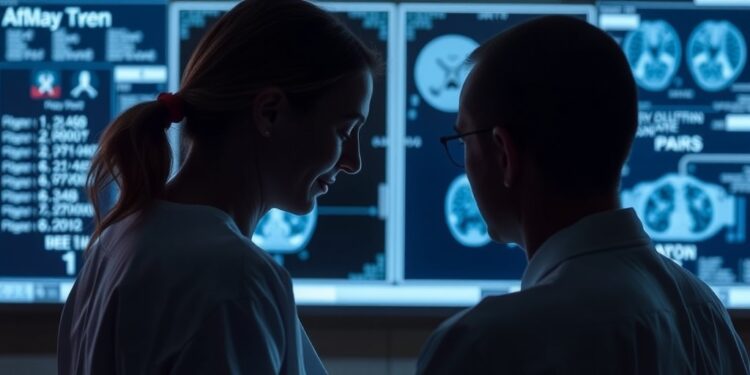This new accessibility raises critical questions regarding patient comprehension of complex medical terminology historically designed for medical professionals rather than laypersons. Many standard medical reports employ jargon that, while familiar to healthcare specialists, can bewilder patients. As Cathryn Lapedis, a respected physician and researcher from the Department of Pathology at the University of Michigan Health, points out, traditional pathology reports are crafted primarily for clinical specialists, such as surgeons and oncologists, or for fellow pathologists. This highlights a glaring disconnect: while doctors might understand the nuances within these reports, patients, who are the intended recipients of this information, may struggle significantly to grasp its implications.
To conduct the research, Lapedis and colleagues enlisted 2,238 adults, aged between 55 and 84, who were not only in good health but also had a prostate. The study design presented these individuals with a hypothetical scenario in which they experienced concerning urinary symptoms, prompting them to undergo a biopsy. Subsequently, they were tasked with reviewing one of three types of pathology reports: the standard University of Michigan report, a standard VA report from the VA Ann Arbor Health System, or a newly designed patient-centered report that takes clarity and patient understanding into consideration.
The results of the research were telling. Participants were asked crucial questions regarding their diagnosis, the Gleason score—which indicates how aggressive any observed prostate cancer is—and their overall risk level based on the findings. Alarmingly, only 39% of those reviewing the standard University report could accurately determine whether or not the report indicated cancer. In stark contrast, 93% of participants who reviewed the patient-centered pathology report accurately recognized that it showed a diagnosis of prostate cancer.
This discrepancy is profound and underscores a critical issue within patient care. In an era where information is readily available, and patients can view their medical records at the click of a button, the realities of these results can lead to significant emotional distress. The study revealed that the level of worry reported by participants was more strongly aligned with their actual risk level when they received the patient-centered reports as opposed to the standard reports. This indicates that clearer communication of medical results is not only a matter of patient education but also an essential component of holistic patient care.
Given these compelling findings, Lapedis advocates for the broader implementation of patient-centered pathology reports. Such reports, designed with layperson-friendly terminology, provide essential information regarding a patient’s diagnosis in a format that minimizes the use of complex medical language. For instance, whereas a standard report might refer to a condition as prostatic adenocarcinoma, a patient-centered report would instead use the term prostate cancer, making the information significantly more digestible.
As the healthcare landscape rapidly evolves, this research underscores the importance of bridging the knowledge gap between medical professionals and patients. Lapedis urges hospital systems to consider integrating these more accessible reports alongside standard ones. This dual approach would not only empower patients, allowing them to understand their health situations better, but also enhance the overall patient experience.
However, until these changes are universally adopted, Lapedis offers practical advice for patients receiving medical test results. She suggests that patients engage in proactive discussions with their healthcare providers regarding the terminology they might encounter in their reports. By familiarizing themselves with key terms before undergoing tests, patients can mitigate the stress associated with receiving potentially alarming results and approach their health challenges with a clearer understanding.
As the research team plans to further investigate the efficacy of patient-centered reports at the University of Michigan, the hope is that their findings will resonate throughout the medical community. The goal is a healthcare future where patients are not merely recipients of information but are active, informed participants in their health journeys, paving the way for better health outcomes and more effective communication between patients and providers.
Through these careful considerations and research advancements, the path ahead looks promising. There is a growing awareness that not only must healthcare systems adapt to new regulations, but they must also evolve into more humane and understanding institutions that support patient education as an intrinsic part of care. By doing so, the true spirit of healthcare—compassion, understanding, and patient empowerment—can be realized.
Subject of Research: Patient-centered pathology reports and their impact on patient understanding and anxiety.
Article Title: Knowledge and Worry Following Review of Standard vs Patient-Centered Pathology Reports
News Publication Date: [Insert Date Here]
Web References: [Insert Relevant Links Here]
References: Lapedis, C., et al. (2024). “Knowledge and Worry Following Review of Standard vs Patient-Centered Pathology Reports,” JAMA. DOI: 10.1001/jama.2024.25461.
Image Credits: [Insert Image Credit Information Here]
Keywords: Electronic medical records, pathology, hospital care, patient education, healthcare communication.





